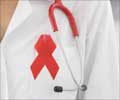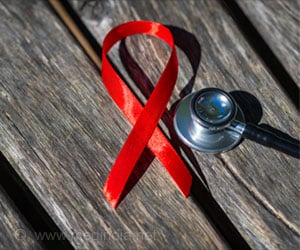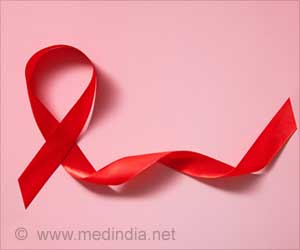New study explores how HIV spreads in three-dimensional tissue-like environments.

‘New study investigates infection dynamics in tissue-like three-dimensional cell cultures and finds that the tissue structure forces the virus to spread through direct cell-to-cell contact.
’





Despite over 30 years of research, many key aspects of how HIV, the causative agent of the acquired immune deficiency syndrome (AIDS) spreads are still not understood. One of these unresolved questions concerns the interactions between the virus with the environment in the human body. Traditionally it has been assumed that infected cells release viral particles which then diffuse and eventually infect other cells. But it is also possible that viral particles are directly transferred from one infected cell to the next through close contact. Until now it was unknown which of these modes of transmission prevailed in tissue.
"Studies on HIV replication in the lab are mostly conducted in simple cell culture experiments in plastic dishes that do not reflect the complex architecture and heterogeneity of tissue", explains study director Prof. Dr Oliver Fackler of the Center for Integrative Infectious Disease Research (CIID) at Heidelberg University Hospital.
In their approach, the Heidelberg researchers took into account that the so-called CD4 T helper cells, the preferred cell type infected by HIV, are highly motile in their physiological environment. They used a novel cell culture system, in which a three-dimensional scaffold was generated with the help of collagen. This allowed for maintaining the cells' mobility and monitoring primary CD4 T cells infected with HIV-1 in a tissue-like environment over the course of several weeks.
Using this innovative approach, the researchers measured a number of factors that characterize cell motility, virus replication, and the gradual loss of CD4 T helper cells. "This yielded a very complex set of data that was impossible to interpret without the help from scientists of other disciplines," explains Dr. Andrea Imle, who worked on the project during her Ph.D. at the CIID.
Advertisement
"Our interdisciplinary study is a good example of how iterative cycles of experimentation and simulation can help to quantitatively analyze a complex biological process," states Prof. Dr. Ulrich Schwarz of the Institute for Theoretical Physics at Heidelberg University.
"Our models allowed us to integrate short single-cell microscopy films with long-term cell population measurements and thereby to estimate the minimal time span required for cell-to-cell contacts to transmit infection," explains Dr. Frederik Graw of the BioQuant Centre of Heidelberg University. The researchers hope that these findings will eventually lead to new therapeutic approaches in the treatment of HIV.
Source-Eurekalert















